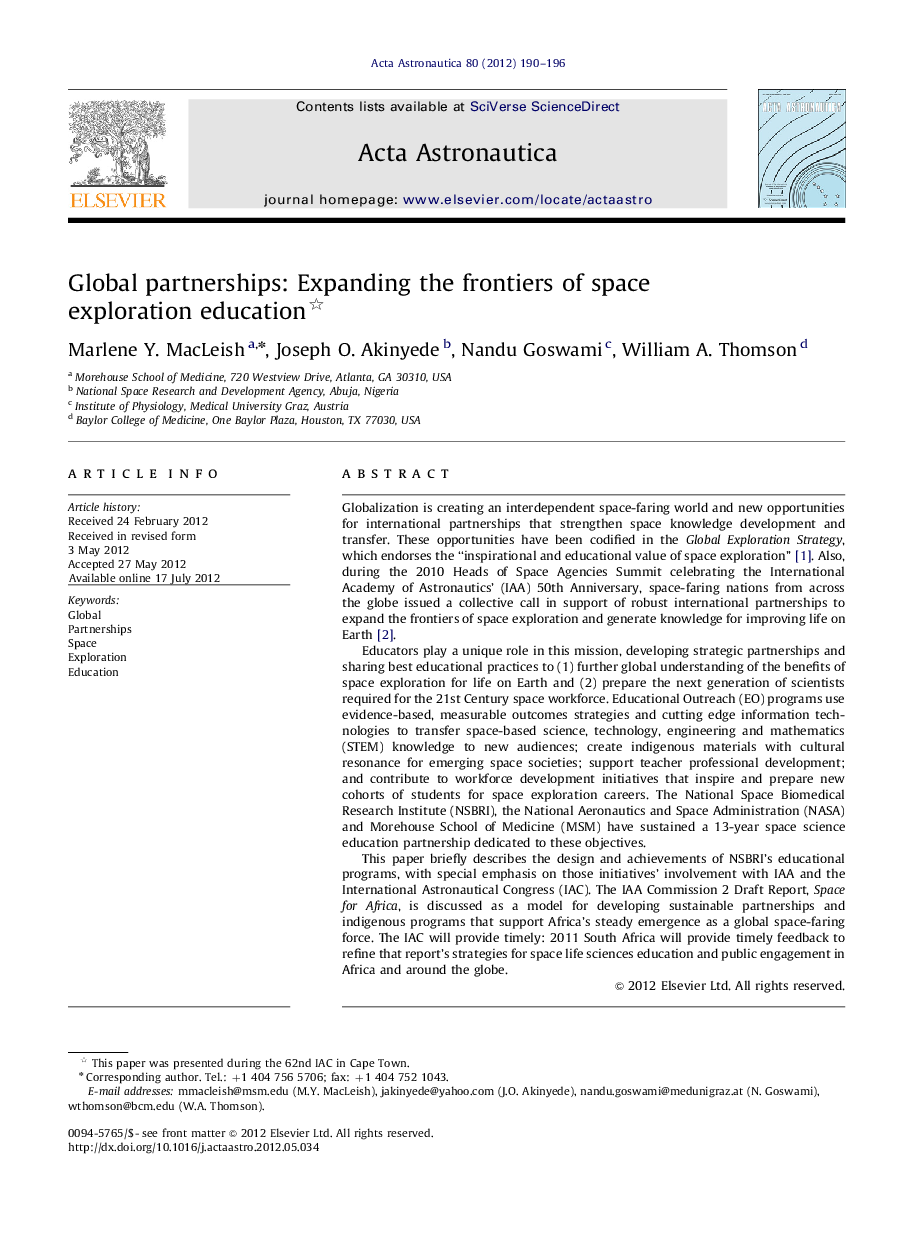| کد مقاله | کد نشریه | سال انتشار | مقاله انگلیسی | نسخه تمام متن |
|---|---|---|---|---|
| 1715260 | 1519968 | 2012 | 7 صفحه PDF | دانلود رایگان |

Globalization is creating an interdependent space-faring world and new opportunities for international partnerships that strengthen space knowledge development and transfer. These opportunities have been codified in the Global Exploration Strategy, which endorses the “inspirational and educational value of space exploration” [1]. Also, during the 2010 Heads of Space Agencies Summit celebrating the International Academy of Astronautics’ (IAA) 50th Anniversary, space-faring nations from across the globe issued a collective call in support of robust international partnerships to expand the frontiers of space exploration and generate knowledge for improving life on Earth [2].Educators play a unique role in this mission, developing strategic partnerships and sharing best educational practices to (1) further global understanding of the benefits of space exploration for life on Earth and (2) prepare the next generation of scientists required for the 21st Century space workforce. Educational Outreach (EO) programs use evidence-based, measurable outcomes strategies and cutting edge information technologies to transfer space-based science, technology, engineering and mathematics (STEM) knowledge to new audiences; create indigenous materials with cultural resonance for emerging space societies; support teacher professional development; and contribute to workforce development initiatives that inspire and prepare new cohorts of students for space exploration careers. The National Space Biomedical Research Institute (NSBRI), the National Aeronautics and Space Administration (NASA) and Morehouse School of Medicine (MSM) have sustained a 13-year space science education partnership dedicated to these objectives.This paper briefly describes the design and achievements of NSBRI's educational programs, with special emphasis on those initiatives' involvement with IAA and the International Astronautical Congress (IAC). The IAA Commission 2 Draft Report, Space for Africa, is discussed as a model for developing sustainable partnerships and indigenous programs that support Africa's steady emergence as a global space-faring force. The IAC will provide timely: 2011 South Africa will provide timely feedback to refine that report's strategies for space life sciences education and public engagement in Africa and around the globe.
► Globalization has created an interdependent space-faring world.
► Innovative partnerships are emerging for space knowledge development and transfer.
► Educators are furthering global understanding of benefits of space science for humanity.
► Educators have responsibility for educating the future space exploration workforce.
► IAA has demonstrated efficacy for space science knowledge transfer to developing nations.
Journal: Acta Astronautica - Volume 80, November–December 2012, Pages 190–196